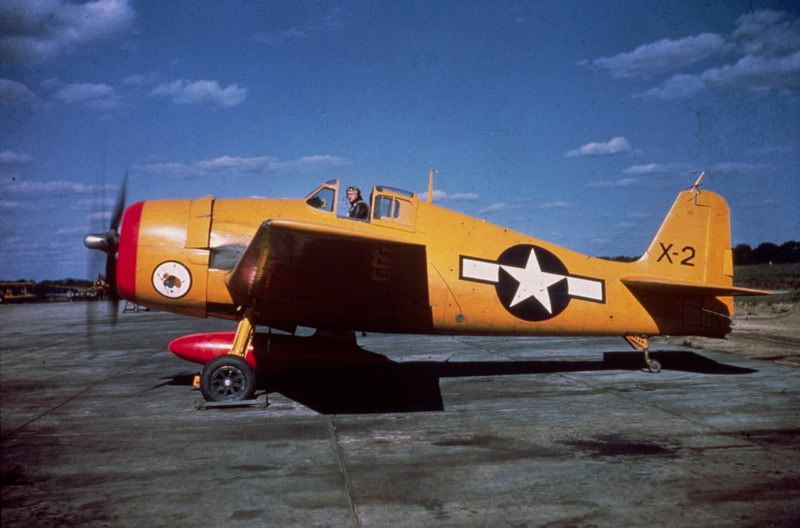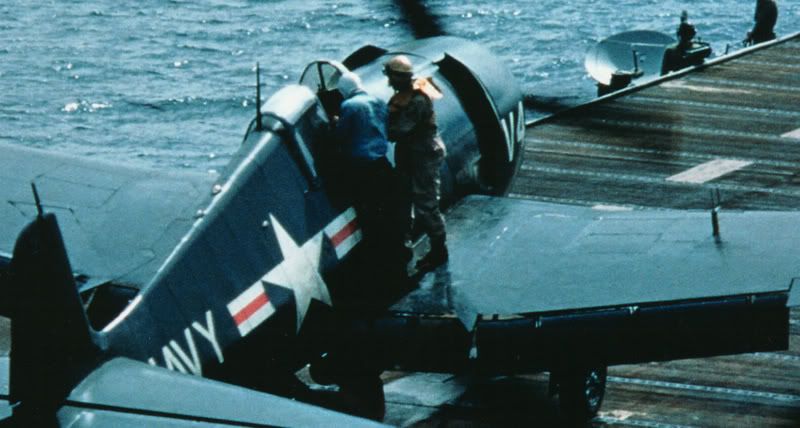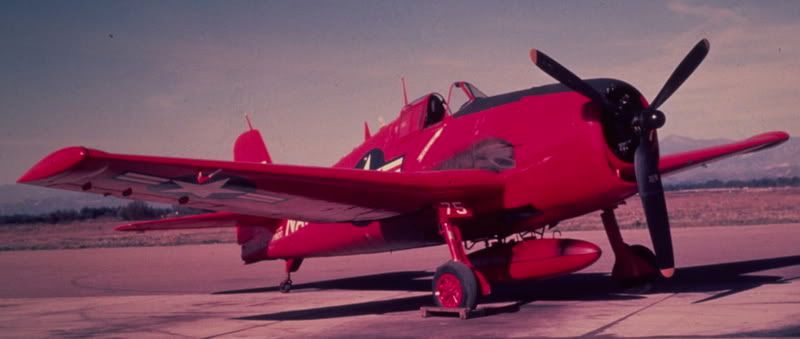F6F Drones
The F6F drones were initially developed at the Naval Air Development Unit at Johnsville, Pennsylvania. At least one of these aircraft was painted a yellow-orange overall and another may have been an odd shade of blue. The extended tail wheel was a feature of these aircraft, which were recoverable.
There appear to have been at least three programs that utilized these drones. The first was a fleet of aircraft that were used to sample radioactivity at Operations Crossroads in 1946. These aircraft were painted red with different color empennages, apparently to denote radio frequency.
Another set was used in the Korean War as a crude guided missile. There were six missions launched from Boxer between 28 August and 2 September 1952 against various bridges, tunnels and power plants. Guided Missile Unit 90 had been formed at Naval Air Development Unit at Johnsville, Pennsylvania. AD-2Qs were used as controllers. The F6Fs carried a pod under the right wing with a TV camera in for targeting. A TV transmitter was mounted on the upper surface of the right wing above the pod.
The attack drone F6Fs were overall glossy sea blue with standard markings. They were marked V1 through V6 on the cowling. Note that these aircraft did not have the extended tail wheel (they weren’t coming back) or tail fins on the bomb (it wasn’t going to be dropped). Of the six missions, there was one hit, one abort (then what?) and four misses.
The third major use was at China Lake and Point Mugu as target aircraft. This appears to have been the requirement that generated “tip tanks” and large wing tip fairings that contained flares to simulate a jet exhaust, and therefore be of appropriate interest to the heat-seeking Sidewinder missile being developed…
China Lake F6Fs were insignia red? Point Mugu F6Fs were repainted in day-glo?
In December 1952, an XAAM-2 Sparrow missile was used to intercept and destroy an F6F in a Point Mugu test, supposedly the first successful air-to-air guided missile kill. In September 1953, the Sidewinder made its first successful interception at China Lake, again destroying the F6F target.
Initial Drone Development

Korean attack drones (note TV transmitter antenna on the starboard wing)

Target Drone with wing-tip flare pods

Additions and corrections would be appreciated.





